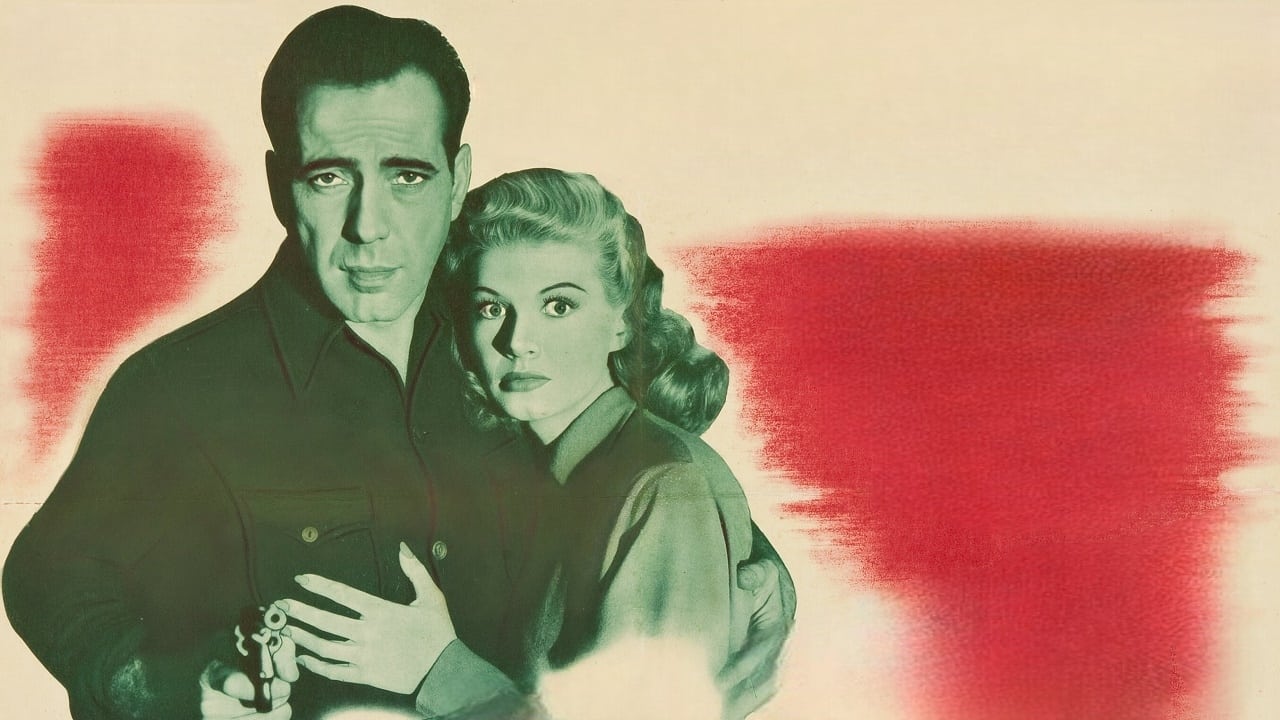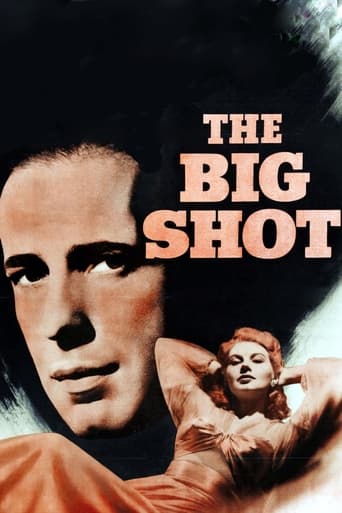

Just so...so bad
... View MoreThis movie was so-so. It had it's moments, but wasn't the greatest.
... View MoreOne of the most extraordinary films you will see this year. Take that as you want.
... View MoreThrough painfully honest and emotional moments, the movie becomes irresistibly relatable
... View MoreIt is hard to believe that Lewis Seiler directed all of this film, remembering the very routine handling of his other Bogart vehicles: Crime School, King of the Underworld, You Can't Get Away With Murder and It All Came True. Most likely he took over the direction from some more inventive director and made a game attempt to follow to some degree the film's original remarkably visual style - e.g. the opening scenes of the flashback, a low angle camera tracking with Bogart through the seedy streets, the mood of depression and desperation set by the narration re-inforced by the moody lighting photography with its shadows and great blocks of black. There are odd snips of the original director's conception throughout: Bogart's face framed by doorways and curtains, a spotlight picking out the dancer on the stage, devices which are used both atmospherically and symbolically (Bogart is "framed" and the dancer is killed in a spotlight). Then there's the obvious one of the cigarette being stamped out before the end title. And there is a remarkable, brief-but-nightmarish montage routine with Bogie sent to prison a four-time loser, the judges rapping out the sentence and the high gates closing. There's also an effective use of mirrors in a couple of key scenes, and the action spots are excitingly staged and edited. But mostly the film is directed in Seiler's usual routine and unremarkable style - but it does have some great performances. The script has a couple of flaws. The dialogue tends to be cliched (in fact some of it could be transposed without change into one of those joke books on How To Write Dialogue For the Movies) but in the lips of such wonderful players as Bogie, Irene Manning (looking very attractive here in lighting and costumes), Stanley Ridges (perfect as the criminal mastermind attorney double-dealer), Chick Chandler (giving the performance of his career as the charming, talented but ruthless dancer), Joseph Downing (a ruthless thug to end all ruthless thugs) and others we love every word of it. The support cast is first-rate with Howard da Silva effective in a small role as Downing's running-mate, Murray Alper ditto as an unwilling stoolie, John Ridgely in a two-line bit as an eager but blind cop, Joseph King as the biding-his-time prosecutor, William Edmunds as the "No trouble in here please, Duke" sleazy cafe proprietor, Virginia Sale as a screamer and Ralph Dunn as the always-standing-around prison guard. Richard Travis is okay as the eager-beaver George though he has some sooky lines to say which he does not manage over well; and while Susan Peters has only a small part as his lady-love, she makes her court-room breakdown fairly convincing. The plot is improbable, but we don't mind that so much as the fact that with the film three-quarters over, the scriptwriters try to insert a little cosy domesticity and comic relief, which they do very badly and ineptly and quite jarring the mood of the rest of the film. A little deft re-editing could completely eliminate these objectionable scenes and improve the film enormously.
... View More"The Big Shot" is a 1942 film starring Humphrey Bogart and Irene Manning. Bogie is a career criminal, Joseph Berne, who is sent to prison for life for something he didn't do - set up by his own attorney (Stanley Ridges), who finds out that Joe is involved with his wife (Manning). Berne's fake alibi is provided by a young salesman, George Anderson, who needed money and instead gets a year for perjury. It's George's predicament later on that gives Joe a crisis of conscience.After years of toil at Warner Brothers, Bogart is now a star, and his image as a gangster is softening and would morph with Casablanca into an anti-hero. He does a good job in this film - his story is told in flashback from the prison hospital. The script is problematic. One glaring offense is that the police locate a criminal in a cabin. When they get there, they don't surround it, and their prey, not even aware the police are there, go out the back and drive away. Most viewers are aware that the cops surround an edifice. Not here. The movie is not particularly well directed by Lewis Seiler. There is, however, an exciting car chase.Of interest here is George's girlfriend, the beautiful and doomed Susan Peters, who less than three years later would be paralyzed in a hunting accident. She was signed by MGM after this film. 1942 was a banner year for her, as she was nominated for a supporting Best Actress Oscar for "Random Harvest." She died in 1952. One of Hollywood's saddest stories.
... View MoreThe Big Shot was completed just as the USA was getting into World War II and it would be many years before Humphrey Bogart once again played a gangster role. He ended his career as Warner Brothers gangster however with a good role that more than faintly resembled his High Sierra and George Raft's part in Each Dawn I Die.The story of The Big Shot is told in flashback as Bogart lies in a prison hospital. As he relates it, Bogey's a three time loser who if he gets another conviction it's permanent accommodations for him at the state's expense. Like Roy Earle in High Sierra, it's really too late for him to go straight.But what a surprise he gets when he finds his former girl friend, Irene Manning, now married to big shot criminal attorney and criminal mastermind Stanley Ridges. When they start taking up where they left off, it's the beginning of the end for Bogey.Like Roy Earle and Hood Stacey in Each Dawn I Die, there is an air of doom about Bogey's Duke Berne in The Big Shot. No matter what he does it will end bad for him as it does for those other characters. But the audience gets quite a ride. Best bit of action is that police chase with Bogart and Manning being pursued by upstate cops.Best supporting performance in the film is that of Chick Chandler who plays another convict Dancer with whom Bogey makes a prison break. Chandler did work in vaudeville and was a song and dance man and got to use those skills in the role. Also Stanley Ridges is one mean and nasty villain.This was the time that Bogart was between classics The Maltese Falcon and Casablanca. Though The Big Shot is not up there with those two, it's a lot better than other stuff he was doing at the time like All Through the Night and Across the Pacific. This is a good film for a Bogart fan to introduce someone else to the charisma and persona of Humphrey Bogart without using a classic.
... View MoreA very exciting fast paced gangster saga, It's interesting seeing Bogart reverting back to his 30's style tough guy persona one more time immediately after his acclaim as Sam Spade in "The Maltese Falcon" & just before his next triumph as Rick Blaine in "Casablanca". This was a transitional period in his career when his image was being redefined from gangster to anti hero. This movie was released at the wrong time, it was seen either too late or too early. Had it been made & seen in the 1930's or had it been withheld & shown in the postwar years along side of "White Heat" it might've went over like gangbusters. But not in 1942 during World War II? We had much more pressing concerns & worries with the Japanese & the Germans. This movie is every bit as good as "High Sierra" if not better, the car chase scene down the slippery slope is exciting & well done. This film literally puts the pedal to the metal & never let's up once. The story moves at lightening speed & will blast you right out of your seat. The Big Shot marked the last time Humphrey Bogart would appear as a gangster, he would not play a gangster for another 13 years until he appeared in a television production revival of "The Petrified Forest" recreating his famous Duke Mantee character. Bogart returned to the movies bringing Duke Mantee with him as escaped convict Glenn Griffin in the William Wyler directed suspense thriller The Desperate Hours in 1955. The Big Shot is essential viewing for fans of old gangster movies & for Bogart fans as well, I like both. So get your tommy guns & tear gas out & enjoy this shoot em up farewell send off to an exciting genre!
... View More